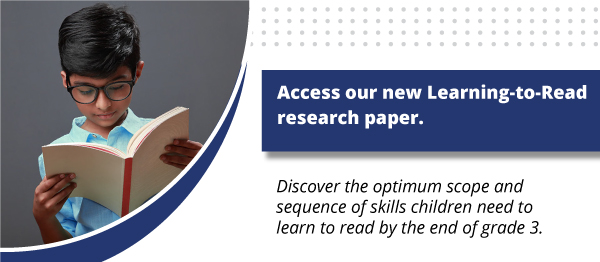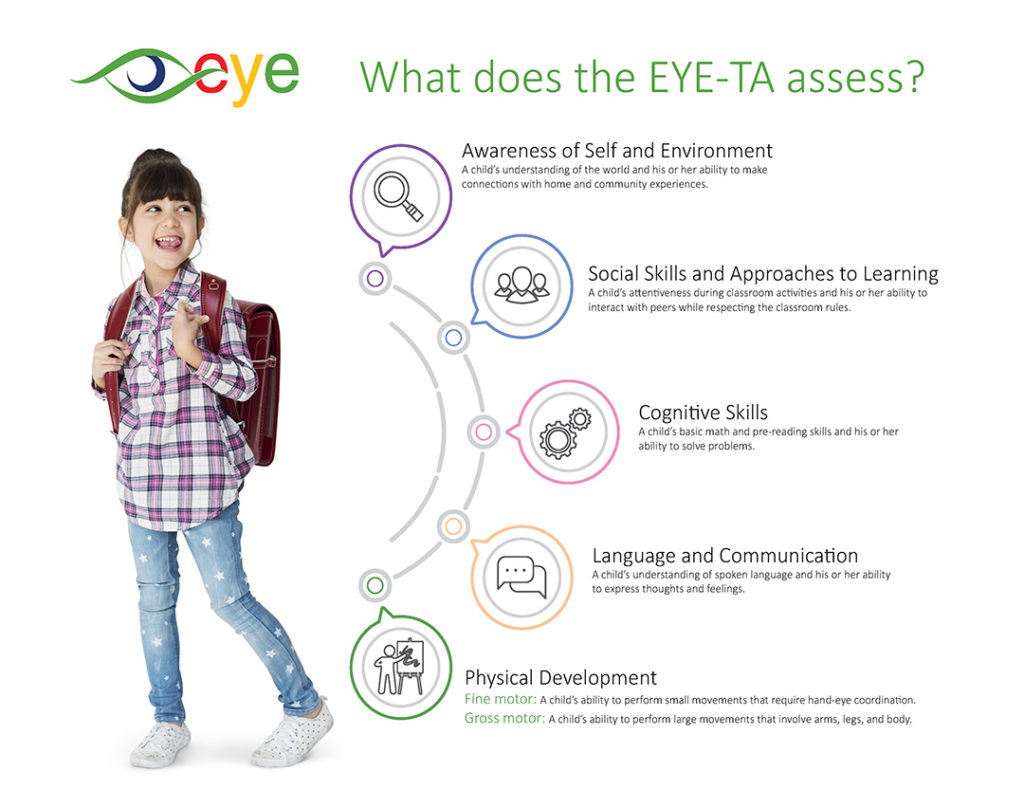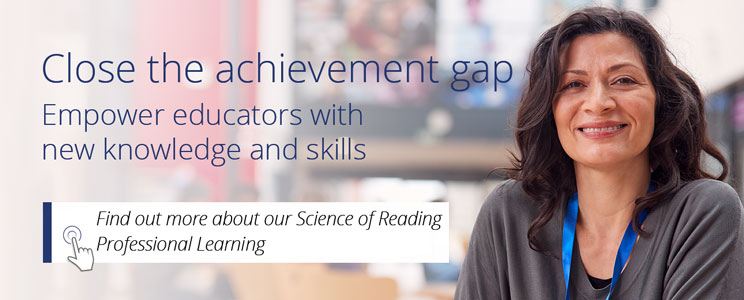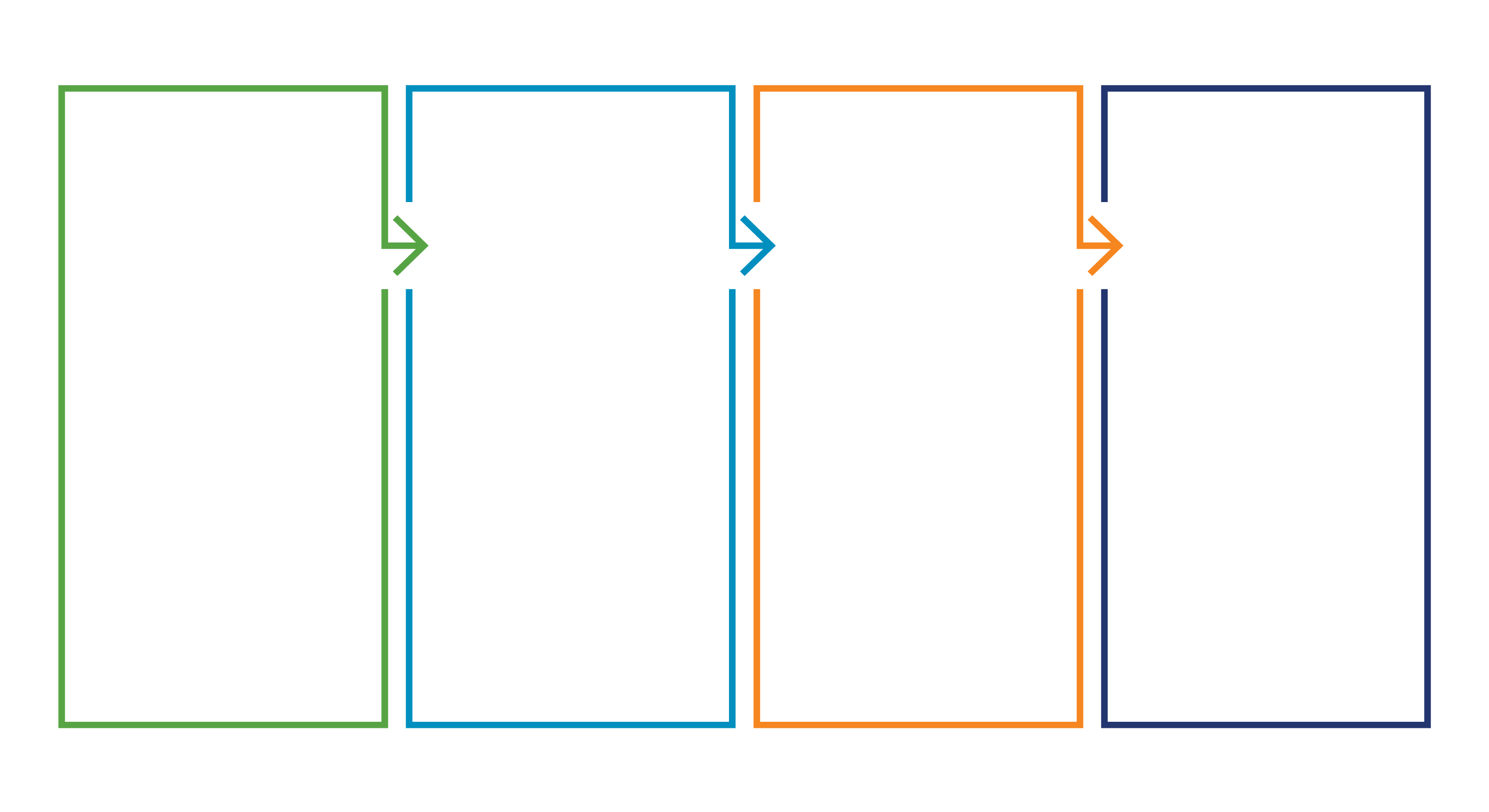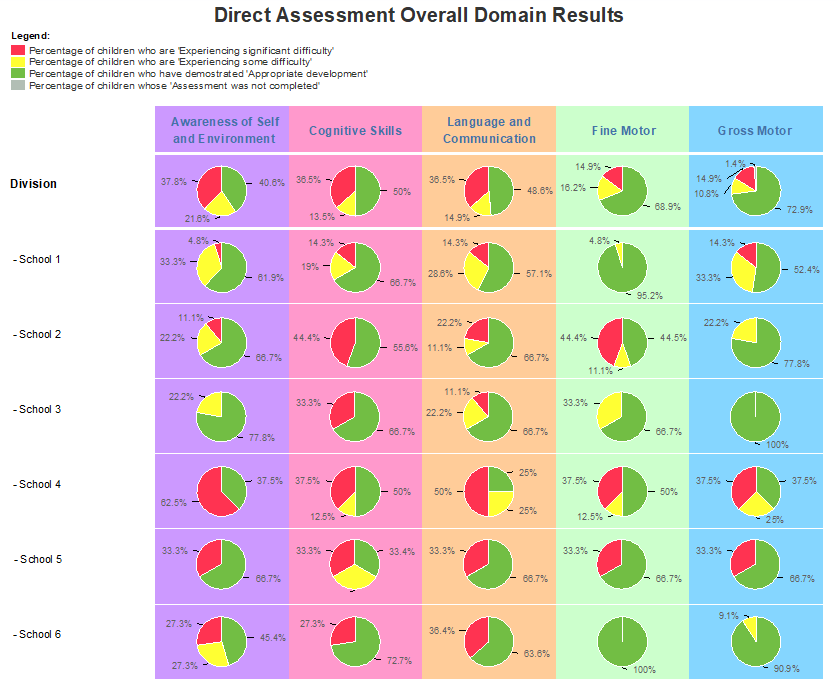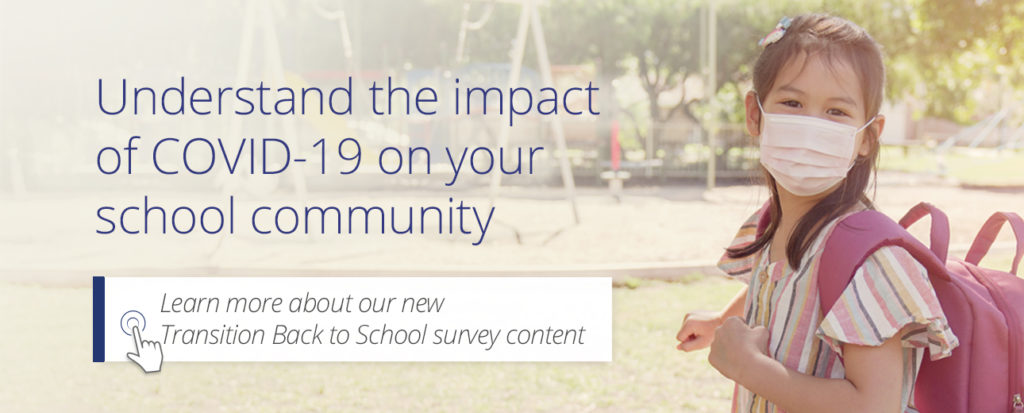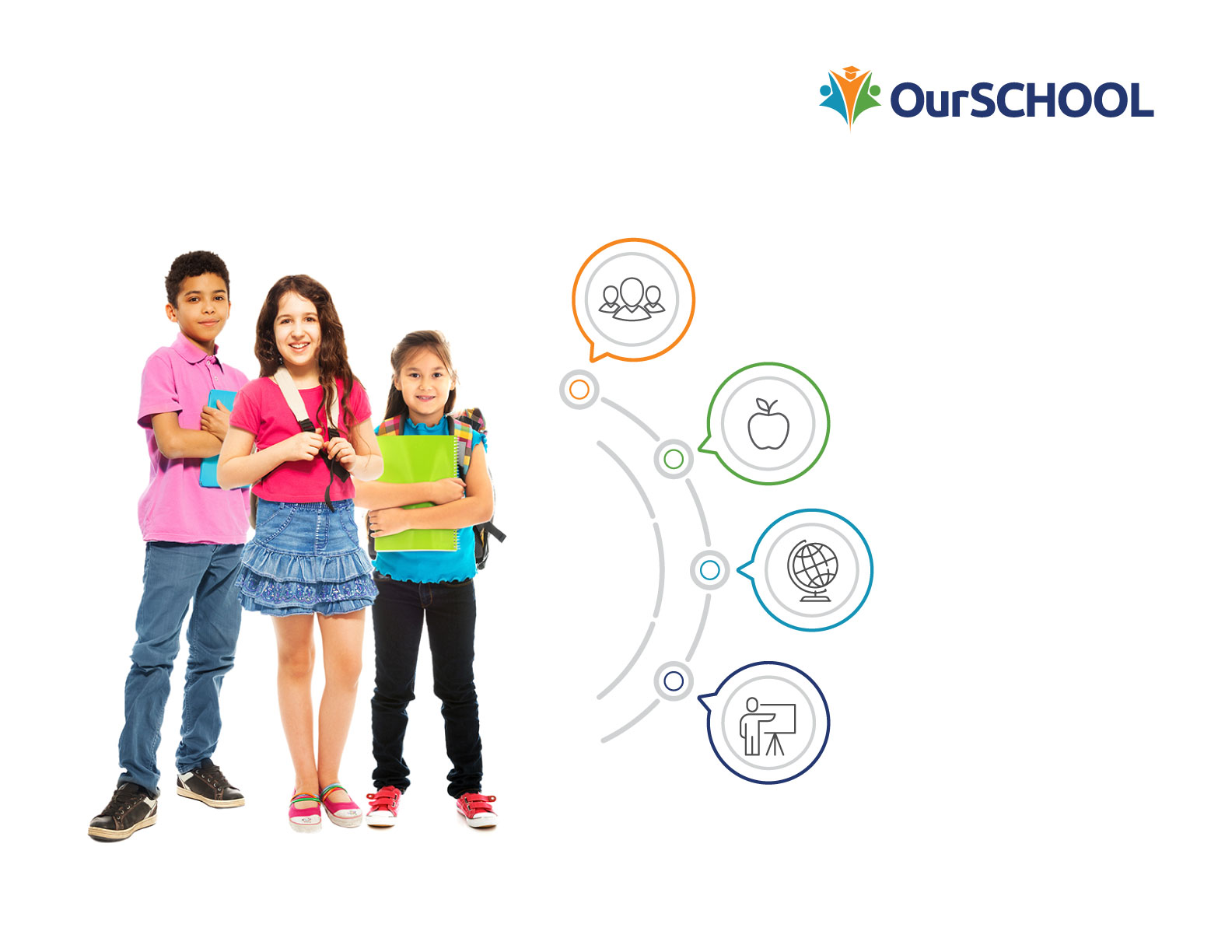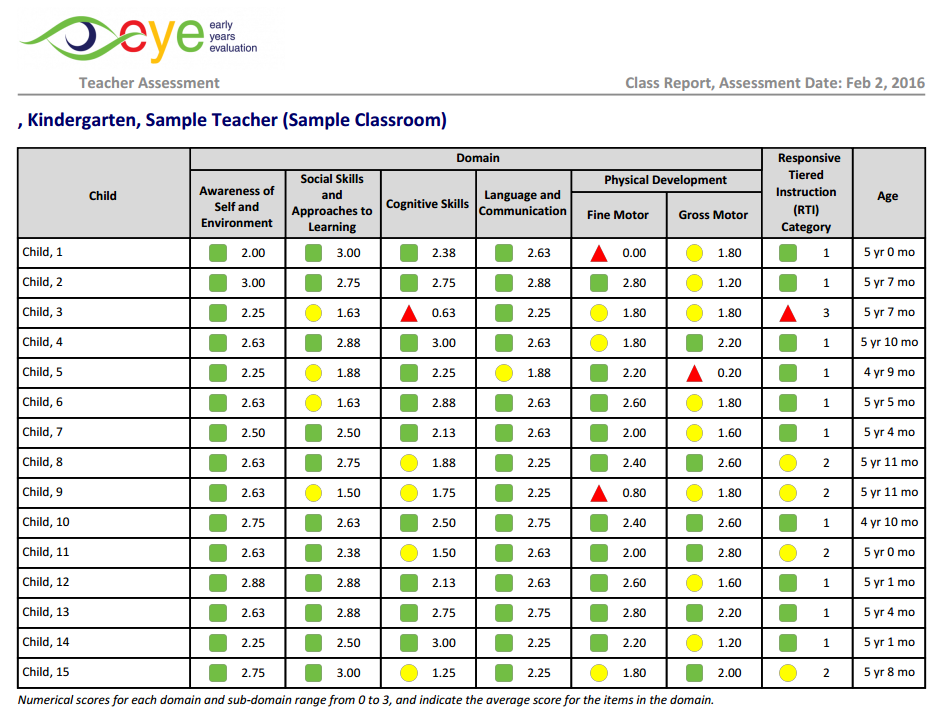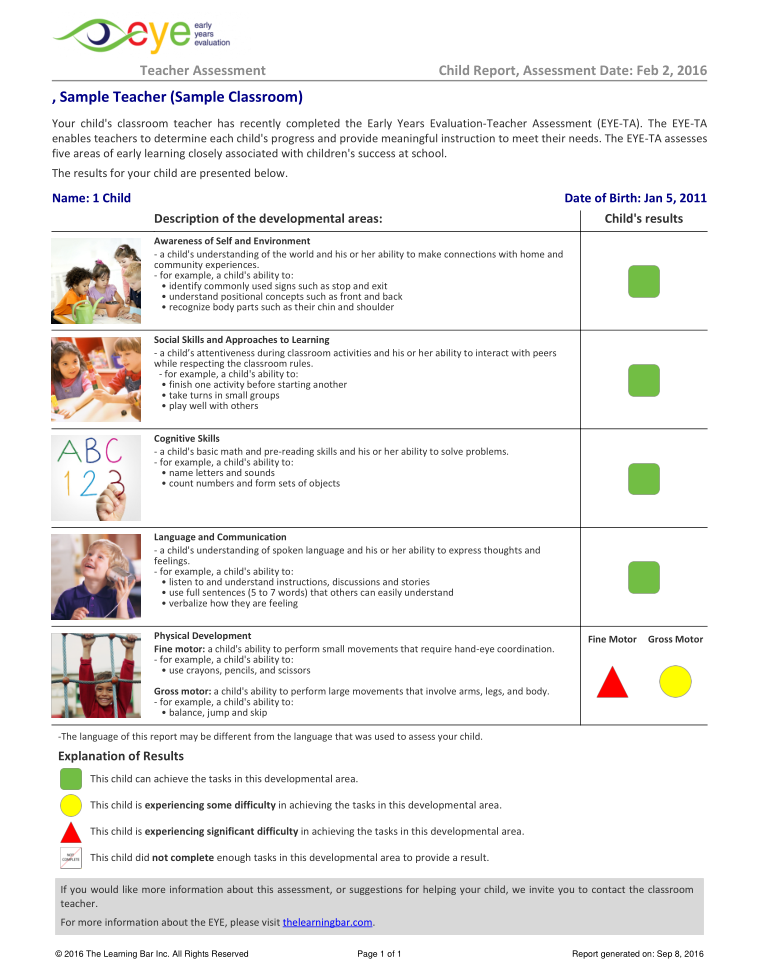
Support a Successful Transition to School
Early Years Evaluation - Teacher Assessment
A child is not a sum of his or her abilities in literacy, mathematics, or science; a child is influenced by many factors, including family, school, and community. These cumulative factors impact every stage of a child’s life. The Early Years Evaluation – Teacher Assessment (EYE-TA) measures a variety of items and provides a holistic picture for school leaders.

Prevent Reading Difficulties
Most reading difficulties can be prevented with early identification, excellent classroom instruction, and appropriate intervention. Research shows 25-50% of children enter primary school with cognitive or language skills that are one or more years behind their peers. To have a positive impact on literacy skills and to support healthy child development, educators need data on each child’s strengths and areas for further development early in the kindergarten year.
Related Content
Implement Targeted Interventions Early
Unlike other early learning assessments, the Early Years Evaluation – Teacher Assessment (EYE-TA) is done early in the kindergarten year and provides immediate reporting and specific interventions to target areas of concern in key child development domains. This allows educators to act quickly to ensure the right supports and interventions are in place for each child.
Align Assessment with Effective Intervention
EYE is the first assessment of its kind that has an explicit link between assessment results and classroom practice. Tailored intervention activities are now linked directly to a developmental domain where a child needs to strengthen their skills.
Find out more about our EYE-100 Domain Strengthening Activities
Measure and Celebrate Progress!
Establishing an early baseline for assessing learning gains allows for consistent monitoring of each child’s developmental needs and alignment of specific interventions. The EYE-TA assesses five key markers of early child development that are closely linked to kindergarten readiness and emergent literacy skills. Perhaps the most rewarding feature of the EYE-TA is that it is implemented in a pre-post model educators can use to measure (and celebrate!) learning gains for each child over the school year.


